Leaderboard
Popular Content
Showing content with the highest reputation on 04/20/23 in all areas
-
@ToughButterCup couldn’t agree more. I followed the advice from @saveasteading so no skip. We don’t really have the room anyway. I’ve done one tip run so far as the garage had a lot of waste with it. Plus it seemed to come with extra everything which I’ve kept. Every night I’ve been tidying up, re-stacking stuff, picking up nails and screws, putting tools away in the garage, re-stocking tea bags/coffee/biscuits/water, cleaning up the rest area etc and writing up my notes on work done, still to do, problems and subsequent actions and then take a bunch of pictures and video before locking up.3 points
-
Site tidying up: every day at least one hour. Nobody else is going to give a stuff Site security: every day something. Nobody else is going to give a stuff Site admin: every day something. Nobody else is going to give a stuff VAT return: every day something . Nobody else is going to give a stuff Catching dropped bollocks. Every single damn day. Nobody else is going to give a stuff Waste disposal. Most days. Nobody else is going to give a stuff Planning, re-planning, re-re-planning. Nobody else is going to give a stuff Talking to tradesfolk - listening - watching : being a good customer. They do give a stuff.3 points
-
3 points
-
I would still stand firm with the supplier. You just need to be cool and reasonable but firm. You said you aren’t that type of person. Few of us are so practice the conversation beforehand. Write down all your points and speak them out loud to your other half or into the mirror. Include what’s the minimum outcome that’s acceptable to you. Write down their counter arguments and what your challenges to those are. Rehearse the conversation. Don’t do it over email. Do it face to face ideally or over the phone if no other choice. Think of some ‘super’ questions to ask them e.g. i tend to ask if this was your xxxx would you accept it? Some folk might say yes to this but few do because you’ve made them put themselves into your position. If they do say yes think of an equivalency such as they’ve got a new car and it’s scratched or the panel fit is poor, would they accept it or ask for it to be made good. Use email to summarise your complaint, the conversation you’ve had and your expected outcome & when this will happen by. While section 75 is good the banks don’t fall over themselves to cough up. The supplier will try and argue you’ve accepted the windows so they need to know you haven’t.2 points
-
My FiL (sadly departed) was an architect and working up until his 80s. He drew everything by hand and for the nicer builds did a watercolour painting of the build as he was a very good artist too. Most of his customers were ancient too.2 points
-
As the title says...we don't want to buy shite. You can still pay 1000 quid and buy rubbish. Pictures are great.1 point
-
I am in the state at the moment of wondering why...... I never realised it was going to be so complicated to get all the paperwork sorted just to lay some blocks with holes in for windows and doors and a roof on top and preferably some heat, cooking and washing facilities, but I would even have considered giving up on those at some point. Due to the complete lack of time we decided that the builder (HID) would take voluntary redundancy and early retirement and then build the house himself. Trying to do this evenings and weekends was just impossible with us both working full-time with an hours commute each way, no home working for us. So, in a few short weeks I'll be the bread-winner thanks to a new job (home working) with more money and HID cashing in a pension policy and HID can build full-time. Or, so we thought. We have planning We have SE drawings We have BC drawings - or so I thought. I contacted our appointed BC (private) and he said great, but can I have .......... This is before we can dig any trenches even. I know that we need to make the decisions on windows, doors, roof, floors, insulation, fire control and engine turning circles and access, water, power as well as many other things. But, I didn't realise that some of this is needed before doing anything. We do have the foundations specified and have sourced blocks, concrete etc for that. So, it's back to the architect to find out about the rest of the BC drawings, apparently what he sent was the overall plan, not the details and to get those we need to go back to the SE with some questions. It seems that there are lots of books out there for self building, but none of them cover all the preliminaries that are required and we just didn't know. The site is prepped, we have got quotes from builders merchants about blocks, concrete suppliers about concrete and pumps, looked at U values. Also, ASHP, MVHR, UFH, and countless other acronyms, but not signed anything. As a barn conversion we have to use as many existing walls as possible, but we do have 1 1/2 sides that never had a wall. I stupidly thought, well we can build those up and then continue on the existing ones that need underpinning, seems that's not how it's done, why not. So, it's back to the drawing board, literally, so work out what I don't know that I need and get it somehow. It's also frustrating that all these professionals have the luxury of working Monday to Friday so when I'm free they are not and when they are free I'm working. Good luck to all you self-builders how there and hope you have more luck than us.1 point
-
A mile may as well be a lightyear when it comes to UK geology. Speak to a SE - get them to advise on what geotechnical information is needed (risk of going straight to a GI company is you get overspec investigations). They may charge a few hundred quid to write a spec but they don't need to do a full structural design to know what ground info they will need. Then get the ground investigation done up front. It'll pay for itself - the same information will help on the foundation design with or without a basement. This will then help by either reducing the grounds works required, and/or avoiding abortive work early in the project, and/or de-risking the groundwork for the contractor when they price. I always always advise that for new builds, get a GI done nice and early.1 point
-
That is a very good practical question! If you have a cavity wall and using twin beams under each leaf then you can use M16 or M20 threaded rod in the web. The rods need to go as close to the top flange as you can so the nut clears the root of the web. You get the web drilled and then align the beams so the holes line up. Weave the rod through and wind on nuts so there is a nut both sides of both the webs... then you fiddle about progressivly tightening the nuts. Now you can only do that if you have a reasonably wide cavity and beam flanges not too wide as you need to get a spanner in between the beams. OR you can be really clever and bolt the rods to the first beam with a nut each side of the beam turned up tight, measure exactly where the inside of the other beam web needs to be, wind on two nuts and turn them in opposite directions so they lock... a locking nut. Then the second beam can be slid sideways onto the rods and you put the last nut on. But all this needs good planning as there are probably props etc in the way. The other easy to do it is to put a flat plate over the tops of the beams and bolt that down to the top pre drilled flanges. The plate acts like a strut. The objective of both methods is to prevent the top flange buckling sideways. Rods can be a bit of a palaver but if you have set your mind on mitigating cold bridging rods work well in this context as their cross section area is a lot less than flat plates. I'm sure there are other ways to do this? but that is some..1 point
-
This post is about attempting to reducing the risk that self-builders take when purchasing goods and services. By another name: Due Diligence. The intended audience is self-builders. People who have an on-going building project and are spending what (for them) is a significant chunk of cash. This post (when it's finished) is intended to help readers decide for themselves how to reduce the risk involved in the process. The notes below assume that the client (you) is a Domestic Client (under CDM 2015 that term is explained here ). This post is not intended to be anything more than a general guide. A starting point for your own thinking. The contributors are not experts. But over time, some of us have become what the research literature calls Expert By Experience. (Here's a web search that explains the term) Some members here are professionals - builders, sparkies, plumbers, brickies, there's even the odd Structural Engineer, a BCO or two, and - praise be - someone who knows about rendering. There's even a man who knows about trees. There's a Planner or two and we have some people with a good deal of legal experience under their belt: that's not to call them lawyers. They may from time to time let slip that they are - in the business. But Its more common for members to keep that to themselves. There's the odd bar-room lawyer here too. I would like to emphasise that even if the posts those members write appear to you to be definitive, that the post sounds authoritative, and is exactly what you need to read, members acting on that advice should still do their own Due Diligence. Nobody here knows your project as well as you do. We're all in a hurry to get on with our building project . That means KISS doesn't it? This thread isn't the place for that (KISS). This thread is intended to enable everyone else to contribute their comments . So it'll go off topic now and then, that's normal. When the comments settle down and the thread loses 'steam', I'll summarise it, and ask the Mods to pin it so we can all have access to it quickly. Due Diligence needs to be appropriate and proportionate to the project. So the post is divided into subsections below A quick note on building projects, family, friends, Mates Rates and Due Diligence. Here be Dragons. Nasty fiery dragons. A professional relationship is often impossible when you employ people close to you. It could be seen as insulting to ask (say) an uncle to refer you to a couple of his clients to talk about his clients' impression of his work. Maybe you can't avoid employing a close relative because there have been cost over-runs, and the 'generous' offer is made to sort-it because 'I've done loads-a jobs like this ' . And S(H)WMO is chittering about completion dates and the kitchen spec disappearing into a forced trip to IKEA. My own teeth are clenched now..... There's no way round the problem. Passive Aggression is unlikely to work. The only way I have found round the issue - and its only a partial answer - is to ask the 'mate' to do very small bits of work, and try to build a good working relationship from there. Mates Rates is often a diplomatic nightmare. Maybe you have a good handle on how to deal with poor work and Mates Rates. Please contribute below. At it's simplest, Due Diligence is about risk reduction. It can be a hugely resource intensive process, and at the other end of the scale it can be a quiet word in the pub with someone who has worked with [...] The process needs to be proportionate to our needs. The notes below disregard the 'heavier' end of the scale: there's little point in doing Due Diligence on British Gypsum, but there is every good reason to think about why plaster board is being offered at a very low price on Ebay. And you really do need to look what a Check-a-Trade operative has built before now Due Diligence: The online guidance Bearing in mind the caveat that the Internet is full of shared ignorance, and on Social Media in particular, I've done a few searches and read some apparently authoritative sites to promote discussion here. Here's what architecture100 has to say on the matter The Construction Wiki has this to say about the process This section on the Master Builder website had me sucking my teeth about what was left out of their advice, but for the sake of completeness, here it is. Here's another Architect's take on the matter . I haven't found any Architectural Technician's website offering advice on Due Diligence. Social Media. I'm not sure whether to recommend that we check a trader's or company's social media profile. Those profiles are so easily manipulated. But on the other hand , it only takes a few seconds and may provide some pointers to further research. Companies: for example window suppliers or build-system suppliers I'm very conscious that concerns originating in this sector of the build market 'caused' this thread. Many contributors had good points to make, and I'll summarise them in the pinned thread (later) Sole traders How do you check (do Due Diligence on) a Sole Trader? At first it seems a daunting task but , broken down into small chunks the task becomes manageable. The process of building a house relies on networks of people. Many of whom will know one another, or 'of' one another. That network is invaluable. And it is often exactly what is not available to the average Domestic Client. You can - with a lot of effort - break in to that network. But it takes time. Nobody wants to spend more time than necessary building a house. Locally it is common to hear of customers waiting for a couple of years for the 'right' builder to become available. In Due Diligence terms, a customer makes the judgement that it is worth the wait to have builder X working for them. The risk is acceptable Due Diligence is hard work. It involves active listening and listening between the lines. Some 'cues' are easy to recognise. Like these for example; "But I thought the decision to buy [...] was a Done Deal .... Why are you hesitant now? Another useful cue is the persistently unanswered phone call, the unanswered emails. Asking for referrals from someone who is already working for you is a good method of risk reduction. Traders are unlikely to recommend poorly performing colleagues. I'm sure there are aspects of Due Diligence that I haven't covered. Thats why I hope that you'll add to the thread below: tell us what you think, what worked for you. So we can all benefit from what @MikeSharp01 memorably calls the Hive Mind. Online resources Expert By Experience: web search 19/04/2023 https://ggle.io/5i5v Architecture 100 website downloded 19/04/2023 https://bityl.co/IGSE Construction Wiki 19/04/2023 https://bityl.co/IGSV Master Builders website on Due Diligence 19/04/2023 https://bityl.co/IGSp1 point
-
sometimes I was just too tired to do that. How often have I wished I'd taken more photos and then tagged them properly1 point
-
1 point
-
That's a big red flag I'm afraid. You lucky lucky thing. DEFINITELY RAISE THIS WITH YOUR CREDIT CARD COMPANY. You are entitled to compensation under section 75 of the Consumer Credit Act. Credit card company is jointly and severally liable for the window supplier's breach of contract. Here, the windows do not comply with all the terms in the contract which are implied by the consumer legistation, e.g. fitness for purpose, of reasonable quality, etc.1 point
-
No. I would reject these. Apart from being unsightly, it's possibly a security risk. With gaps so thick, what's to stop a burglar coming along with a large sharp knife or small saw and cutting through the foam and ripping out the window? Surely they provided technical drawings for sign off before you signed off on the windows. What do those drawings show? If you don't want a fuss, and are happy to accept these to avoid delays and litigation, you could always just accept them, but not pay the final invoice. I don't know how much saving that will be, probably not much more than 5% or 10%, but it will be at least something. You can do this completely lawfully. All you do is at the end, once they've done everything they have to do and demand their final payment, you just send them an email saying that the products supplied were not fit for purposes and they were not of the correct dimensions. This has caused you additional costs in terms of building out the reveals/cavities. You therefore have a claim for damages against them and you are setting off what you owe contractually against what they owe you. The only difficulty with this approach is that they may not issue you with the final paperwork and certificates. You may need that to get your building control approval (or whatever the equivalent is in Scotland). But some of the docs you need like documentation showing the technical specification of the glazing units should be available on the order paperwork you already have, so you might be able to get away with it. Check with your BC inspector what exactly they require.1 point
-
I do appreciate it guys. Apologies1 point
-
Ignore the fact that the Willis heater is external - the two situations are almost exactly the same (albeit there might be slightly more stratification in the Willis heater example due to how/where it introduces the heated water to the tank - an internal immersion is more likely to cause some turbulence/mixing). In both cases, buoyancy causes hot water to rise and displace cold water downwards, and also in both cases, the distance that the cold water will be pushed down is limited by the vertical position of the heater.1 point
-
Sh!te, get an independent surveyor. They're Scottish suppliers/installers, they "should" know 90% of everything in Scotland goes in behind the ingo (check reveal). That tells you everything you need to know. He is of course correct. Stand your ground, they're obviously not accepting responsibility or saying we've ****ed up, these are the options available and our preferred solution is x. Is this acceptable?1 point
-
it seems they do, they switched me to Cosy same day in Dec'22 then same day again to Flux in Mar'23. All provided of course that you meet the somewhat onerous conditions, smart meter, proof/declaration of heat pump ownership/MCS cert (Cosy), proof/declaration of MCS, DNO certs, DNO letter, PV + Battery ownership (Flux)1 point
-
I asked ours if he wanted salted or dry roast..... I still have the limp.1 point
-
We've recently transitioned (ooops sorry) from splinter-in-yer-arse-pallette-knock-togethers to hand-me-downs from our daughter for nothing. It looks shite, it is shite, the chickens poo on it (two are sunbathing on it currently - ermmmm, three now) , the sheepdog hoovers up all leftovers and you can spill any amount of red wine on it with impunity. Top stuff. Cost? Nothing. Too embarrassed to post a photo.1 point
-
A wooden batten slotted behind and screwed either side then a square of plasterboard screwed or glued to the batten. Joint filler to make good the gap. the square cut for the new socket location should be just the right size to fill the old hole.1 point
-
Just got back in from finding lightweight tarps, weed guards and some old DPM, enough to cover the trenches ready for after the pour. We have a very large, very heavy duty tarp for the tractor, but I didn't want to use that as I suspect it would just collapse. I shall post some photos after the deed is done. The BC said he would be here 1st thing, no idea what that is to him The pour is scheduled between 12 & 1. BC is off to one off to Heveningham Hall after us and will come back later to see the concrete in situ. Then, it's wait a few days, until next week, and the laying of blocks can begin, slight issue with that is they haven't actually been delivered yet, should be tomorrow. Maybe I should have the local vicar doing a 'laying on' of hands to bless the build, she probably would be quite happy. It's taken a long time, but thanks for help, until the next question 🙂 On the temp note of large builds, I worked on a factory build 2 years, we had to sink 30m piles (make up ground) with 3m foundations and that had a no. of temp gauges1 point
-
There's no exit fee so unless someone has been refused I don't think they'd have an issue with switching every six months. That may get more complicated soon as fixes start coming back in, I wasn't with octopus when they did them for the smart tariffs but I believe it was a one year fix? Flux is probably the first test of this heavy seasonal skew and it still may not be worth switching depending on usage, so I don't think they'll be plagued with an annoying amount of customers switching often.1 point
-
get the new supply installed now before you exchange. Can you not route it up the drive to the new build, even if its shared ? Totally a standard practice in England having easements for sewers, water, gas, electric, telephone etc.1 point
-
I think this is probably your best solution to heat the whole tank. Also has no moving parts so no pump needed. Often used to retrofit solar thermal heating to an old tank, so it's a proven solution. As with anything relying on convection use big bore pipes and swept bends to reduce pipe friction hindering the circulation1 point
-
thermosyphoning is exactly how a Willis works. It's why we love'em here in NI- piping-hot water to the top of the tank in minutes for a quick basin of dishes, or a whole tankful for a bath in an hour. You don't need the stat set too high to get the flow going either, so I'd opine it would match a diverter well.1 point
-
No don't touch it. It looks to me like diagonal bracing to stiffen the building. That would imply retrofit because something was moving. Laid flat-ways it can only work in tension which implies the same. And it ends on the line of the big timber beam, so nodes are lining up and that again says it is needed for triangulation. Imagining the photos without it, it all looks very sparse and unstable. So I would not touch it now. A Structural Engineer might say it can go, or that it can be replaced by something tidier. Better that fee than the house failing and insurances void for messing with it. Or continue to duck. In fact. with it being a strange timber, I would be inclined to put a sign on it saying 'this timber is structural , do not cut or remove'.1 point
-
Once or twice, yes. Yes, as you rightly surmise, it is done on major civil engineering. Dams, bridges etc, where the implications of failure are massive. In large pours, overheating is a problem and there can be cooling pipes embedded, or the aggregate is chilled before mixing. On cold...I was very personally involved in a concrete pour when we had missed the severity of the weather forecast. The Beast from the East battered us as shutters were concreted. I never felt so cold (Kent). Next day the concrete crumbled out of the shutters with ease and became expensive hardcore. On foundations on big sheds the wind uplift can be the critical load, the wind being strong enough to lift multi-ton structures. For LSB we are only looking at small downward forces, but we still wouldn't want the concrete crumbling and having to do it again. 'tomorrow' is almost upon us...hope it goes well. And may i say for the nth time...do not add any water to the readymix...the mix is precise and not to be messed with. Any added water evaporates eventually, leaving millions of holes.1 point
-
Just make sure it's stable and not going to topple on any small kids etc. There's an awful disease among the long term property owner, they assume they own everything they can see out their window.1 point
-
I disagree. Your current immersion is unable to heat more than the top of the tank because of its position. Putting a Willis heater low down would allow much more of the tank to be heated. Exactly. You were complaining about the complexity of a destratification pump. This is a potential solution. I don't actually know whether a Willis heater addresses all of your problems, but I can't see why you wouldn't at least look into it further. They're pretty cheap and there isn't much plumbing involved.1 point
-
IMO olumbing, electrics, kitchen fitting - anything that you can take your time on (without racing against materials drying); requires measuring with tools (rather than skilled eyeballs); and has to fit around other works (where you'd otherwise be calling somebody in multiple times to work unproductively doing part says)1 point
-
I dont see why they wouldn't install a supply to your plot. You're going to need a temporary supply anyway.1 point
-
1 point
-
I suspect they allowed tolerance twice by mistake. The installer measured the openings, and took 15mm off all round. Then the manufacturer did the same. I don't know what industry standards there are, but I would think at least they pay for the extra cost in finishing this.1 point
-
Yes, I have 14.5kWh at the moment, but that will soon be 29kWh of storage, so hopefully this will serve me well through winter without changing tariffs. Apparently from what I've heard you have to stay on a tariff for at least a month. Good luck, when my SMETS1 meters stopped working last year, it took Octopus pretty much 22 weeks to get them replaced. A battery is not a requirement for Flux, you need less than 9kW of PV, MCS Cert, DNO paperwork and of course a smart meter.0 points
-
As I predicted might happen a window has been damaged by a scaffold board. Scaffolder saying it wasn’t them. The problem is the kit erection guys removed some boards right beside the window to give them access so the scaffolder will say it was them that did it. Deep joy.0 points
-
0 points
-
I'm definitely feeling this. They go into enough detail to make you think "this isn't that complicated," but nowhere near enough detail to be useful once you get going.0 points
-
Went to site at 7am this morning, just as the windows arrived, a day early and today is scaffolding day. What is it with folk and their inability to follow clear instructions. Anyway an hour of moving stuff around and we’ve off-loaded them. Lorry driver told me he did a delivery last week to a field. Phoned his contact and the bloke went quiet and said he never achieved planning permission and forgot about the window order. 😂0 points
-
You know when you've said or written a word too many times and you forget how to spell it, well that was me. Done. Head fried. I've looked back at previous posts I've made, and I have changed to draft, instead of writing draught. Spell check / predictive text is undoing all that my teachers installed. OK, all sorted. Back to the thread please!!0 points



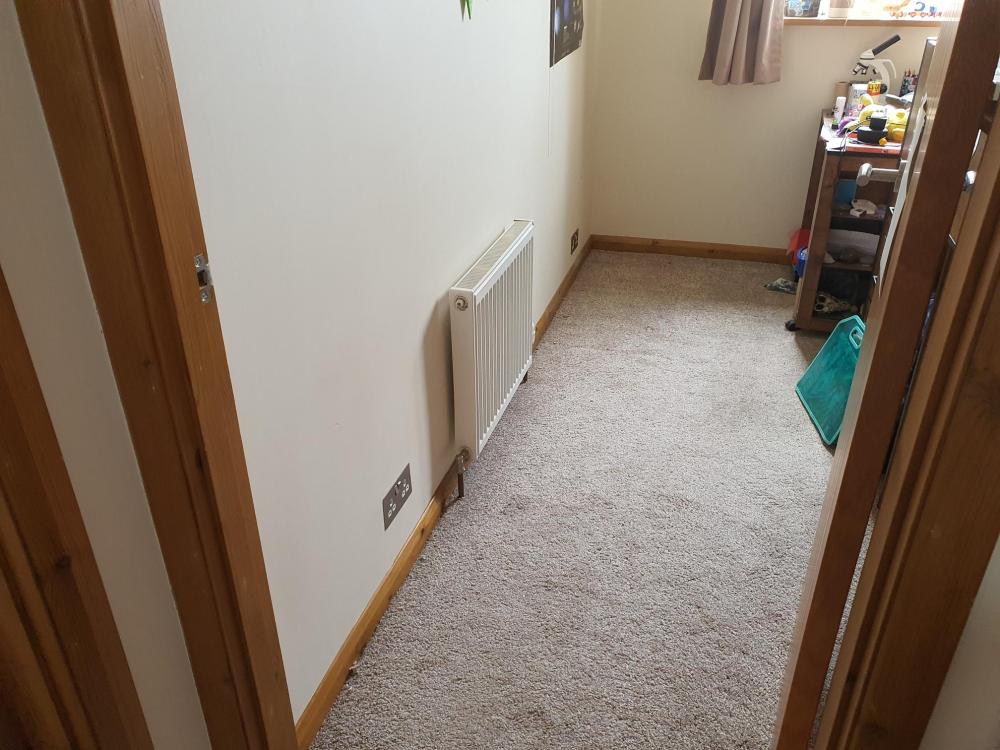
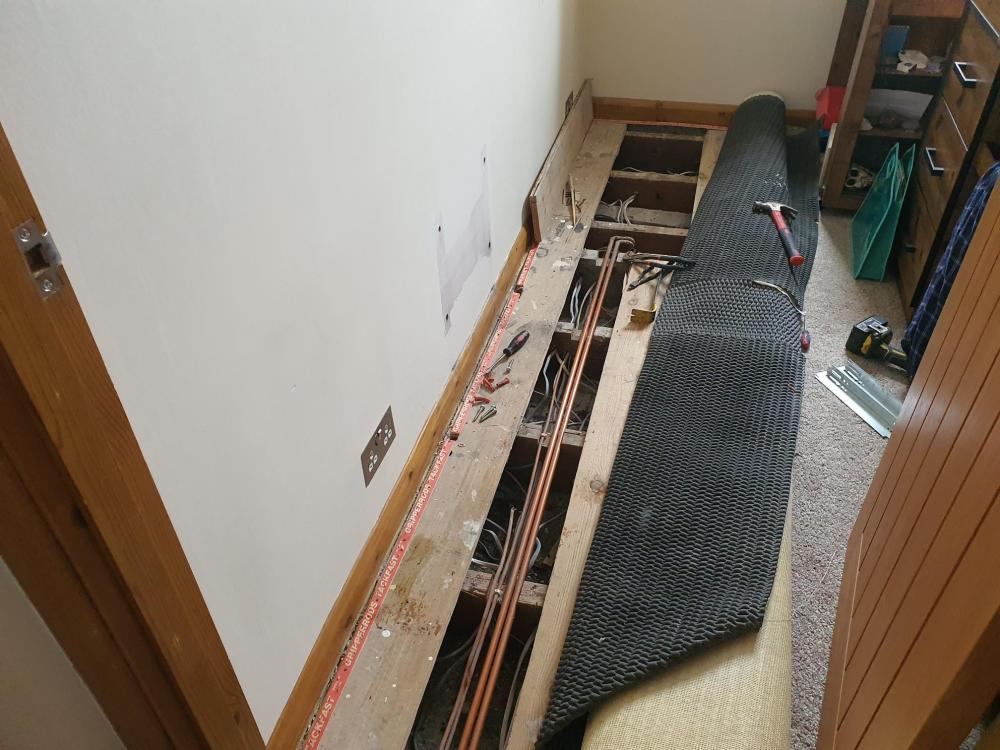
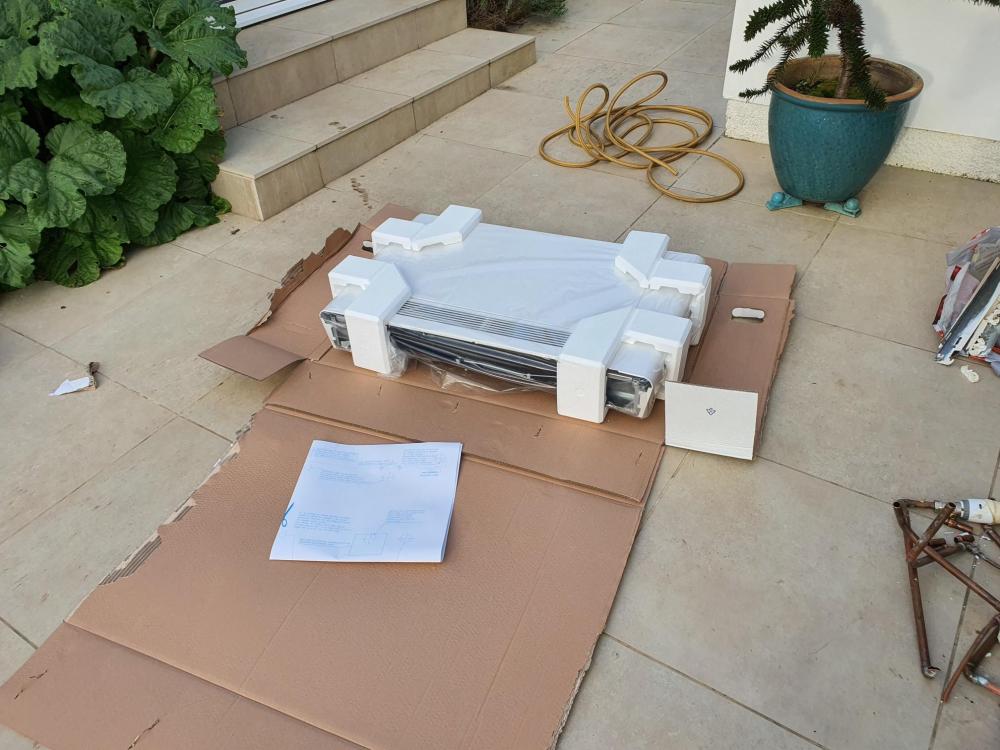
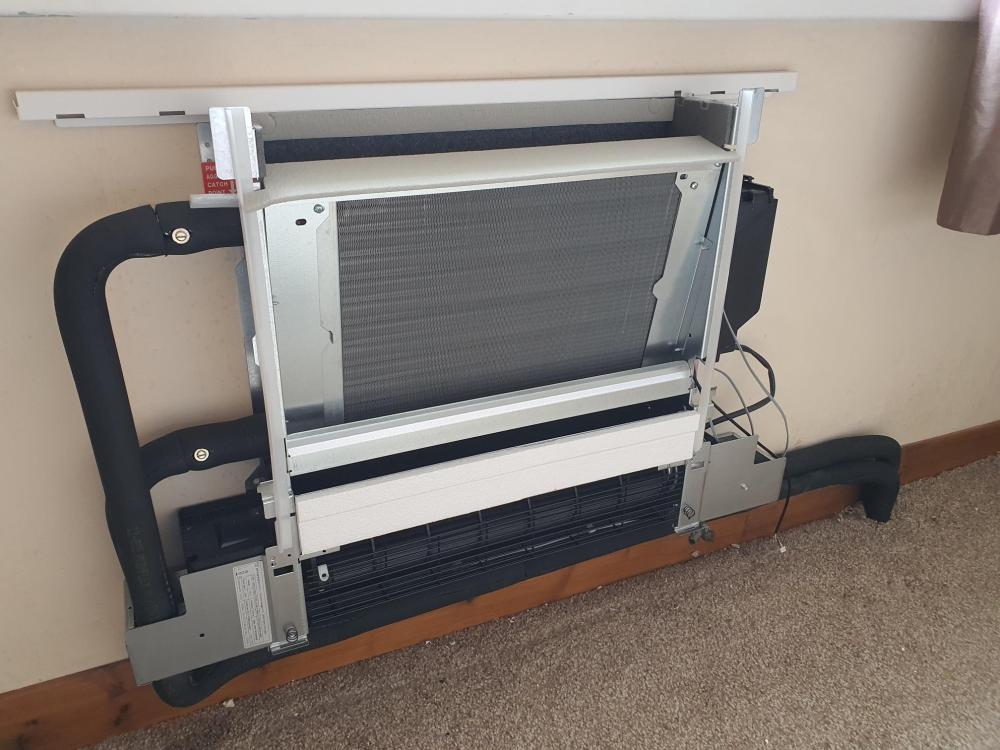
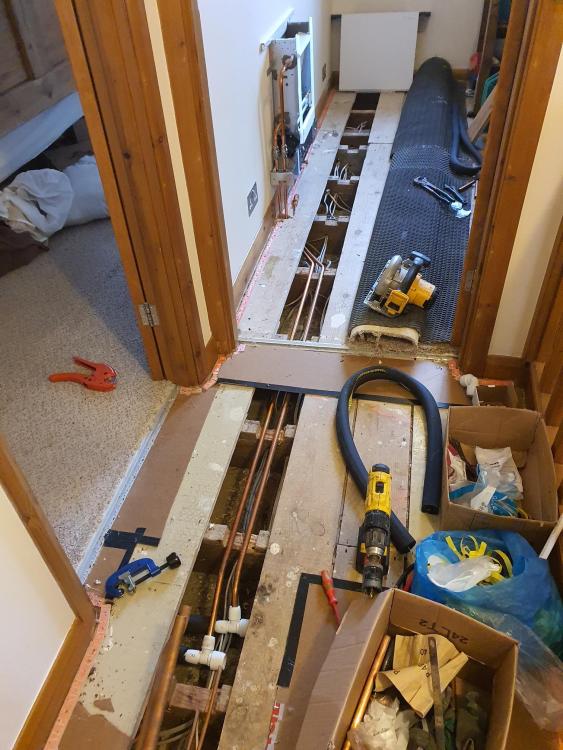



.jpg.c21f3ac78c9b7efd90cbdcb312744dc5.thumb.jpg.7adcad4c0e384f5ecd7d56b0618df6e5.jpg)



